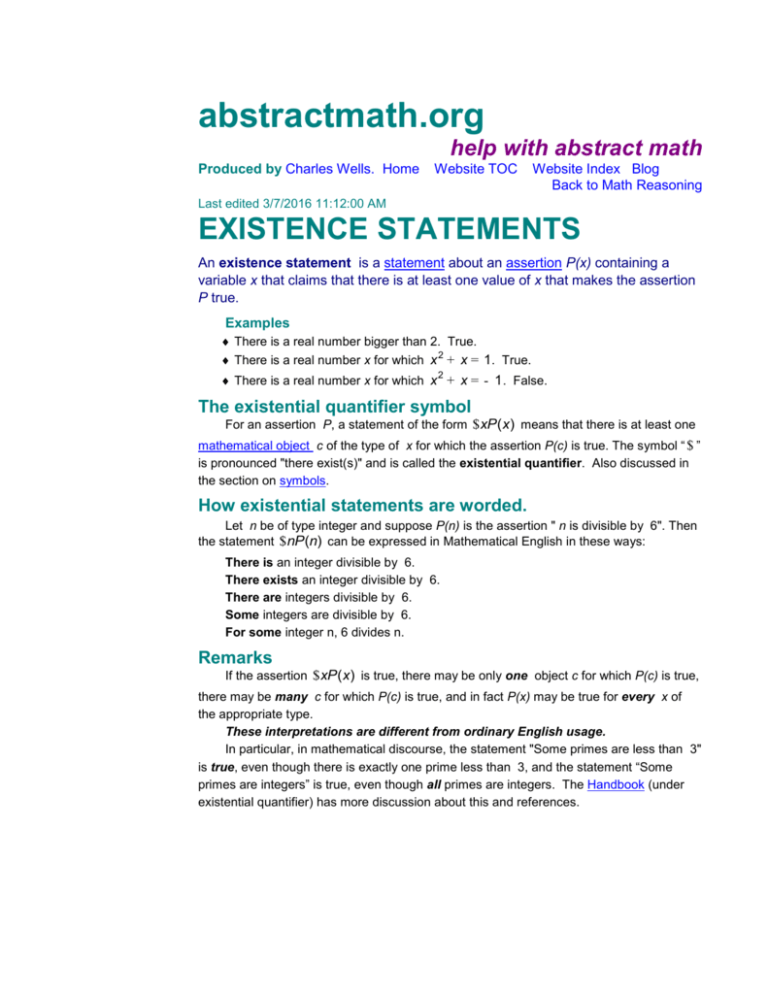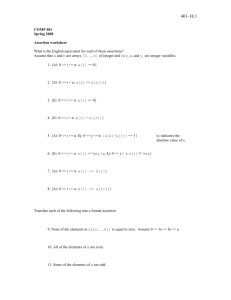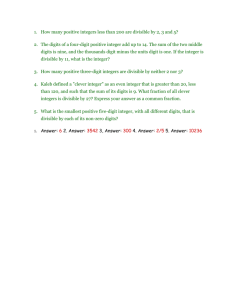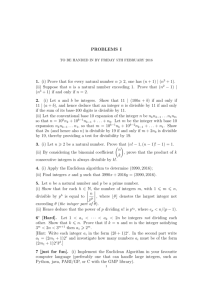MMExistenceStatements
advertisement

abstractmath.org help with abstract math Produced by Charles Wells. Home Website TOC Website Index Blog Back to Math Reasoning Last edited 3/7/2016 11:12:00 AM EXISTENCE STATEMENTS An existence statement is a statement about an assertion P(x) containing a variable x that claims that there is at least one value of x that makes the assertion P true. Examples There is a real number bigger than 2. True. 2 There is a real number x for which x + x = 1. True. 2 There is a real number x for which x + x = - 1 . False. The existential quantifier symbol For an assertion P, a statement of the form $ xP ( x) means that there is at least one mathematical object c of the type of x for which the assertion P(c) is true. The symbol “ $ ” is pronounced "there exist(s)" and is called the existential quantifier. Also discussed in the section on symbols. How existential statements are worded. Let n be of type integer and suppose P(n) is the assertion " n is divisible by 6". Then the statement $ nP (n) can be expressed in Mathematical English in these ways: There is an integer divisible by 6. There exists an integer divisible by 6. There are integers divisible by 6. Some integers are divisible by 6. For some integer n, 6 divides n. Remarks If the assertion $ xP ( x) is true, there may be only one object c for which P(c) is true, there may be many c for which P(c) is true, and in fact P(x) may be true for every x of the appropriate type. These interpretations are different from ordinary English usage. In particular, in mathematical discourse, the statement "Some primes are less than 3" is true, even though there is exactly one prime less than 3, and the statement “Some primes are integers” is true, even though all primes are integers. The Handbook (under existential quantifier) has more discussion about this and references.






